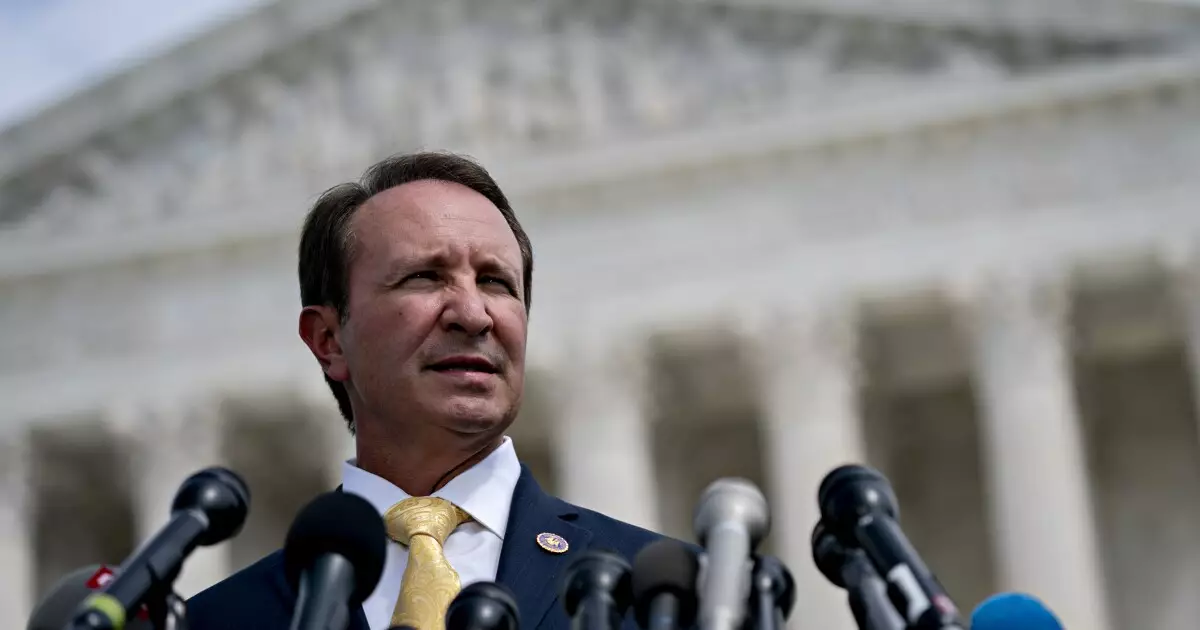In a bid to counteract a looming fiscal deficit projected to exceed $587 million in the upcoming year, Louisiana has enacted significant tax reforms. The potential effectiveness of these reforms has drawn mixed reactions from credit rating agencies such as Fitch Ratings, Moody’s, and S&P Global Ratings. While they acknowledge that the changes could stabilize state revenue, they also underline the inherent unpredictability of tax revenue forecasting, especially in light of substantial tax adjustments. With forecasts serving as a foundational pillar for state budget management, the implications of these changes warrant careful scrutiny.
The Louisiana Revenue Estimating Conference raised its revenue projection for fiscal 2026 from $11.704 billion to approximately $12.151 billion, reflecting confidence in the newly adjusted tax structure. According to Denise Rappmund of Moody’s, this upward revision aligns with anticipated expenditure reductions, suggesting a potential equilibrium between state revenue and spending. Yet, Eric Kim from Fitch Ratings cautions against complacency. Historical precedents—particularly from states like Ohio and Arizona, where tax adjustments led to overly optimistic revenue projections—serve as a compelling reminder of how fiscal assessments can unravel.
While there is optimism concerning the new sales tax increase, which came into effect on January 1, it is noteworthy that sales tax revenues had already dipped by nearly 4% prior to these reforms. This decline could indicate underlying issues within the state’s revenue-generating frameworks. Rappmund emphasized that the pronounced gap in revenue collection prior to the tax changes makes it critical to monitor how quickly these adjustments will reflect in subsequent fiscal reports.
Among the various tax changes, the sales tax increase is notable for its immediate revenue-generating potential, contrasting with the longer-term adjustments to income tax. The increase to 5.00%—set to revert to 4.75% by 2030—coupled with the expansion of taxable items, suggests a comprehensive strategy designed to enhance sales tax revenue. Rob Marker of S&P supports this approach, viewing the revised estimates as reasonable and highlighting that even with a modest increase, the state’s financial footing indicators remain on solid ground in comparison to the previous fiscal year.
However, the vulnerability of sales tax revenue cannot be overlooked. In an economic landscape influenced by fluctuating consumer behavior, the adaptation and acceptance of these new taxes depend on numerous factors including regional economic stability and consumer sentiment. The state will have to maintain vigilance, ensuring that the broader public perceives the tax changes as beneficial rather than burdensome.
Mitigating Budgetary Risks and Stability
The structured institutional framework in Louisiana equips the government with the authority to address financial shortcomings proactively. As noted by Marker, should actual revenue fall short of expectations, the governor has the means to implement swift budgetary cuts. Coupled with a constitutional mandate for balanced budgets, this mechanism serves as a critical tool for maintaining fiscal health. Such governing constraints not only reinforce financial responsibility but also instill confidence amongst credit rating agencies and investors.
Conversely, potential external pressures loom, particularly concerning federal spending on essential programs like Medicaid. Louisiana, with its high enrollment rates in such programs, could find itself at a disadvantage if federal funds are curtailed both in terms of funding availability and structural finances. These uncertainties underscore the need for a robust fiscal strategy that can accommodate changes in federal policies, ensuring that any pressures do not spiral into crises.
Governor Jeff Landry’s vision for these tax modifications extends beyond immediate financial stability; it anticipates growth in economic activity leading to enhanced revenue generation in the long term. Yet, achieving this growth requires careful navigation of both state-level fiscal policies and global trade challenges.
The potential imposition of tariffs on imports, a policy hinted at on the national stage, could have repercussions for the Louisiana economy. Such measures may not only impact local exporters adversely but could also escalate the cost of imported goods, leading to inflationary pressures. Kim’s observations about these trade dynamics warrant attention as they are interconnected with the state’s revenue expectations.
As state officials engage with bond rating agencies in hopes of improving Louisiana’s general obligation bond rating, the conversation will inevitably encompass both the benefits and risks associated with the recently enacted tax changes and the broader economic environment.
Louisiana’s recent tax reforms present both opportunities and challenges. As the state strives towards fiscal stability amidst taxing transitions and external pressures, the intricacies of economic recovery and growth must remain a priority. By monitoring revenue impacts closely and preparing for potential strains, Louisiana can ideally position itself for a resilient financial future. The resultant balance between prudent fiscal management and proactive policy adjustment will be key to ensuring that the state can navigate the fluctuations of modern governance effectively.

